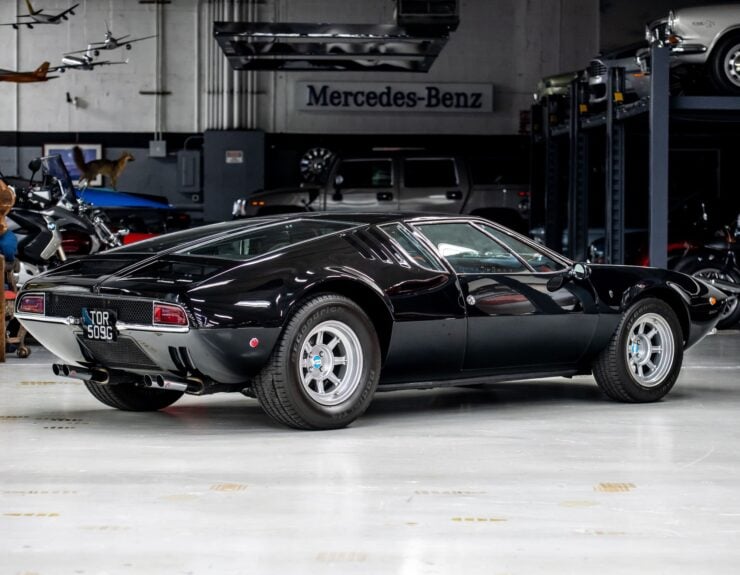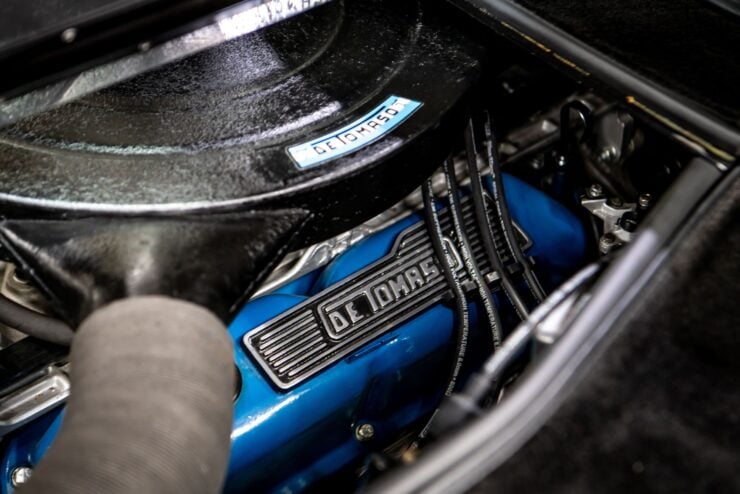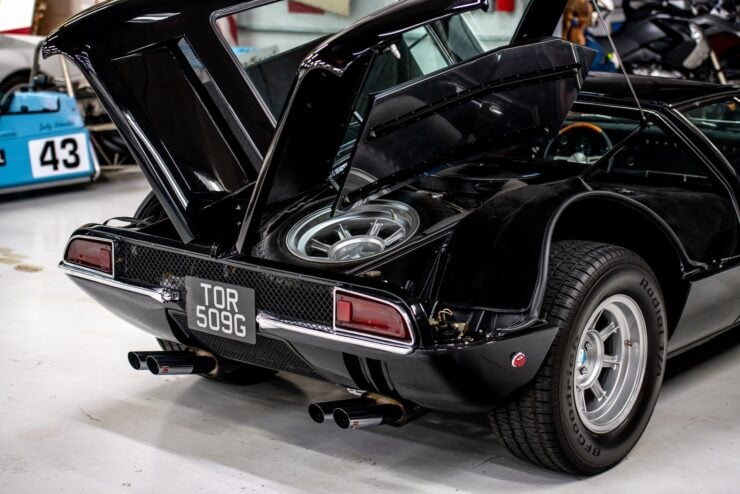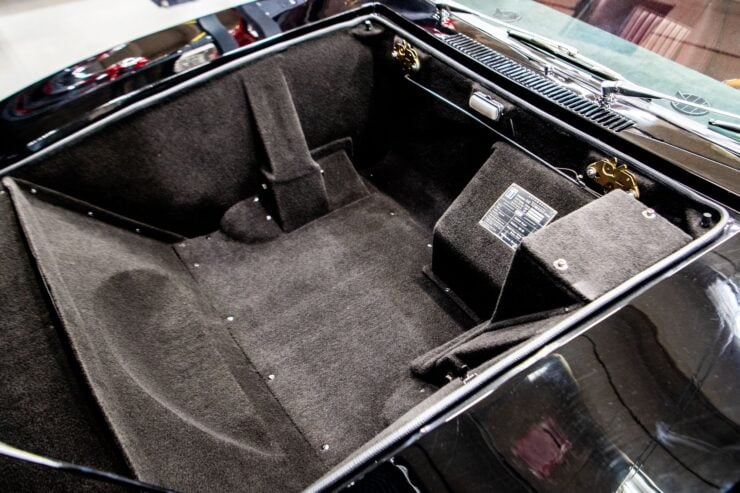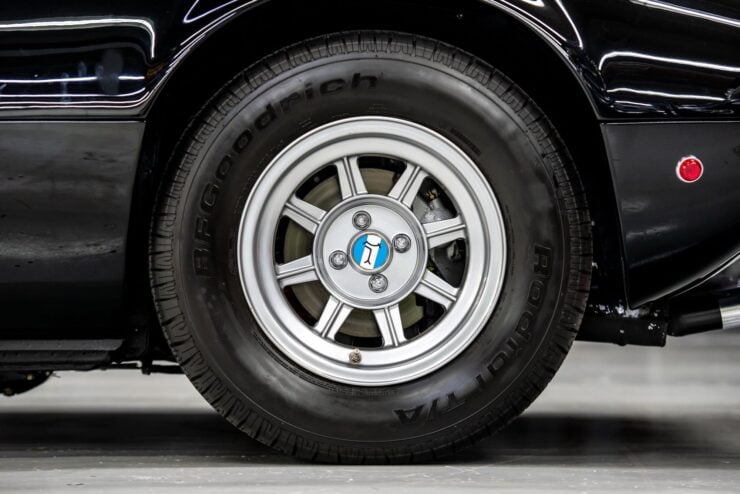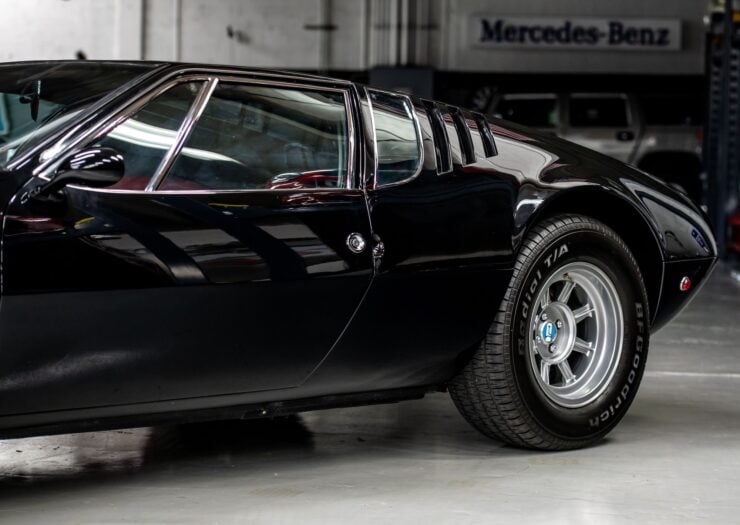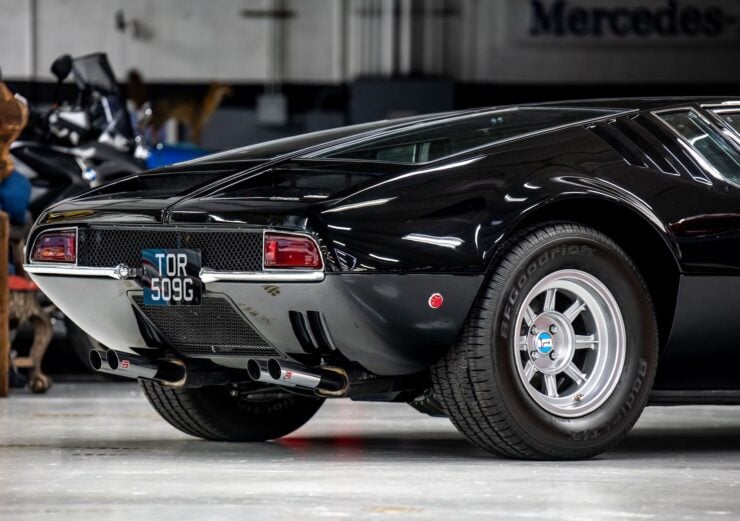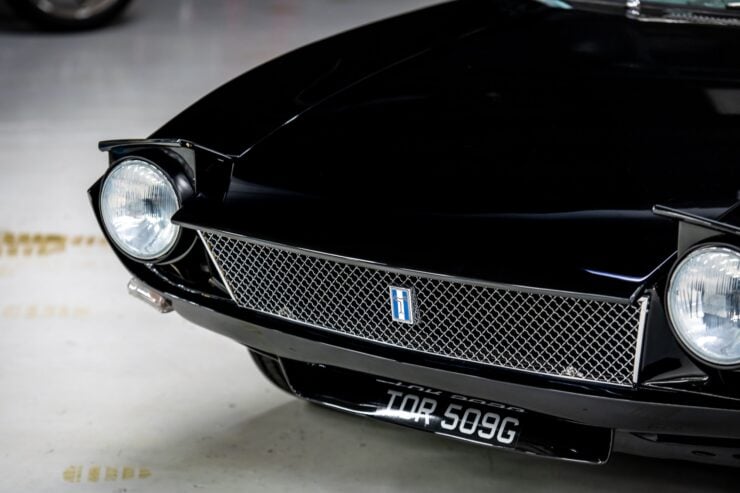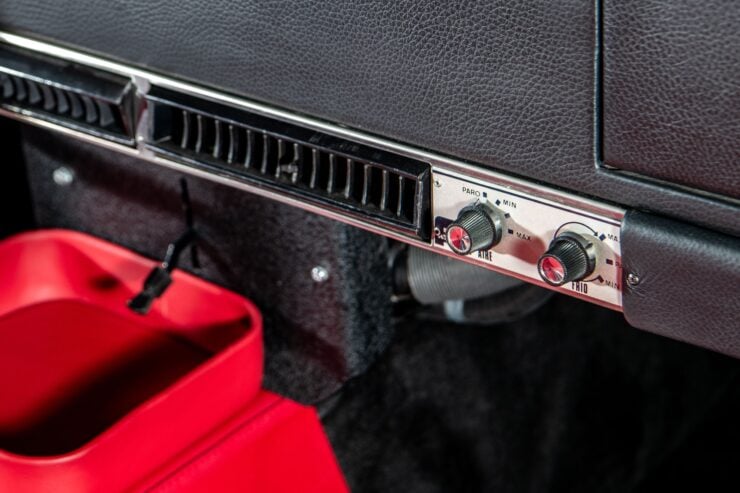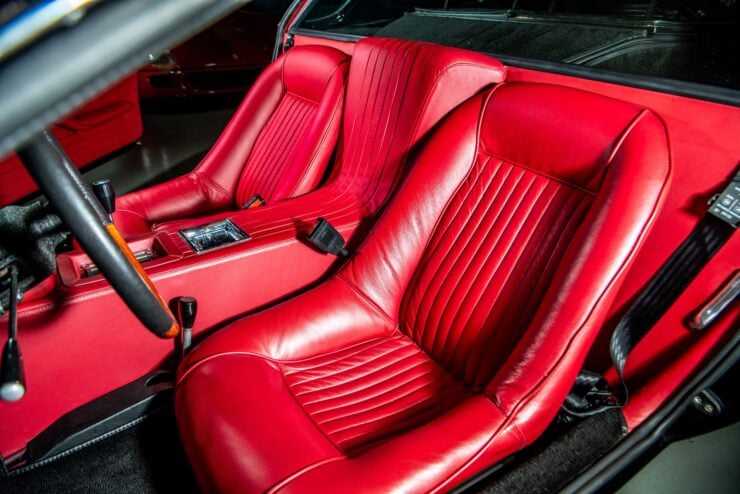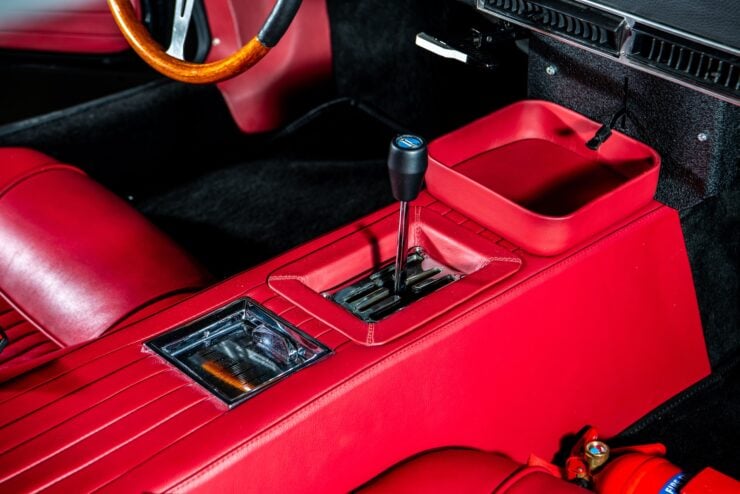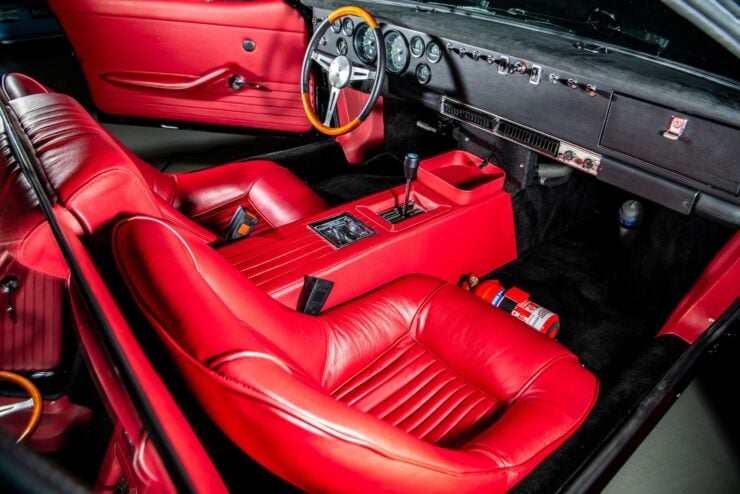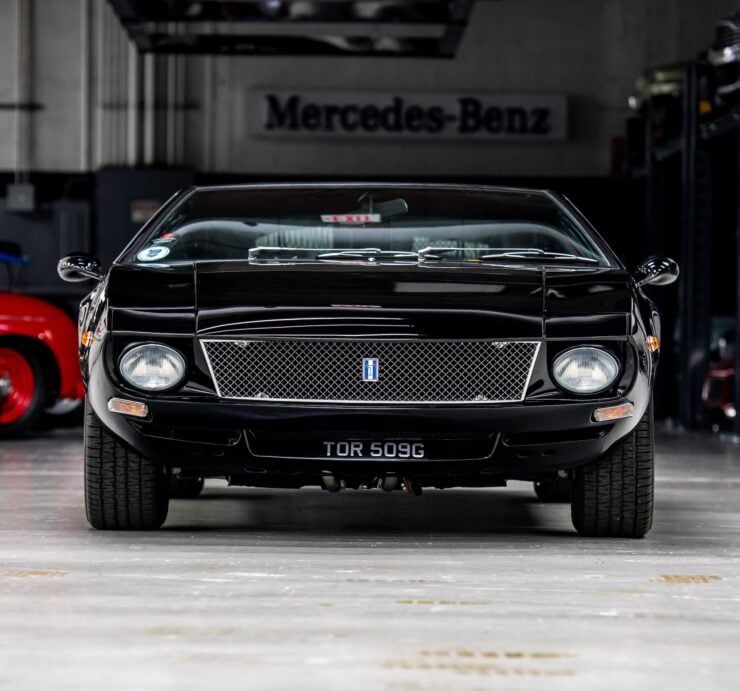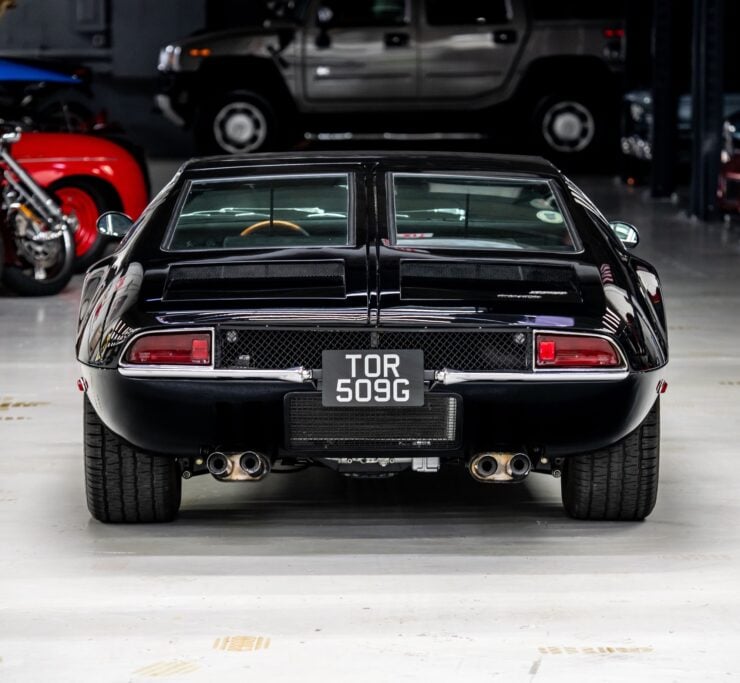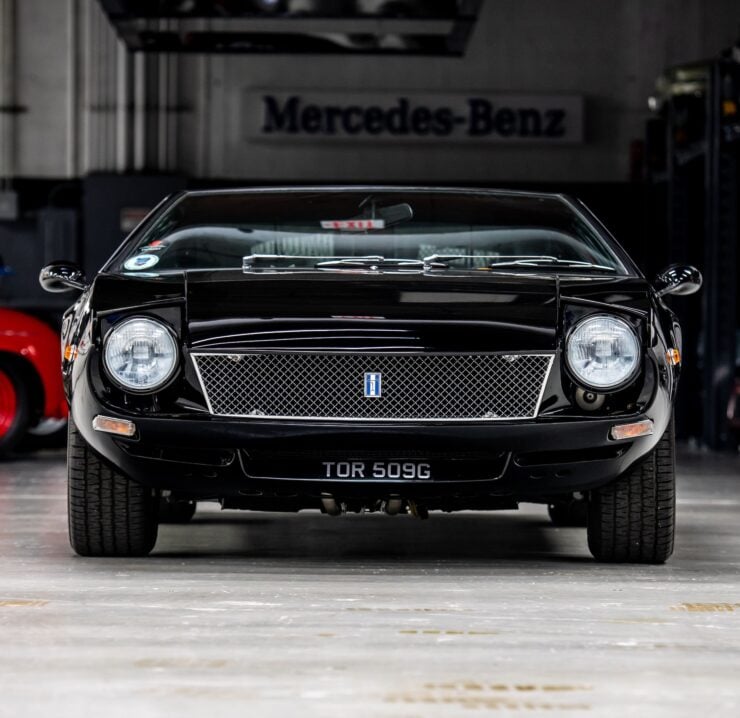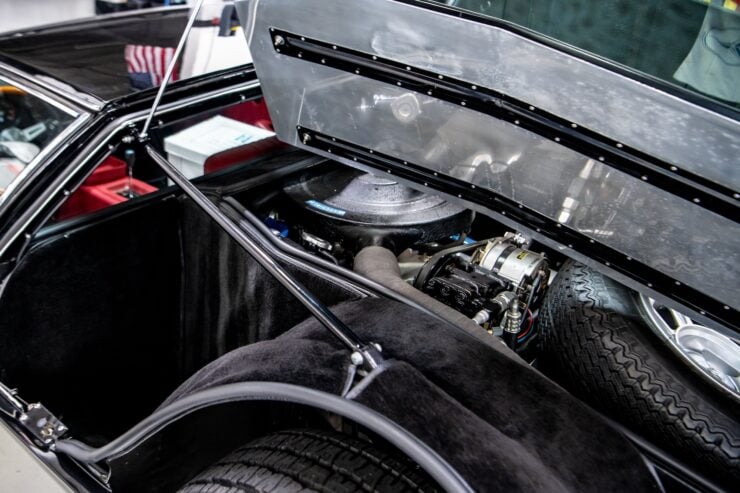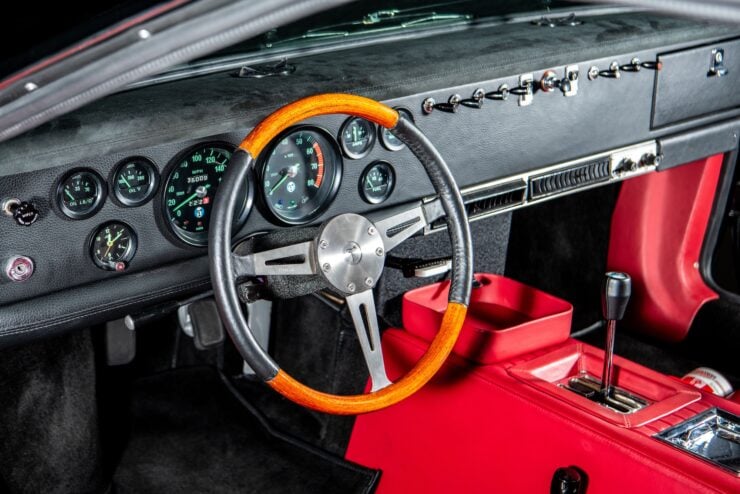The De Tomaso Mangusta was famously given its name, Italian for “Mongoose,” after a deal with Carroll Shelby went bad. The Mongoose is the only animal that hunts cobras, and Shelby was the man behind the now legendary Shelby Cobra series of sports cars.
This is one of the rarer pop-up headlight versions of the De Tomaso Mangusta from 1969, just 50 or so of these were made, with the other ~351 of the production cars getting the better-known quad headlights in the grille.
Fast Facts – The De Tomaso Mangusta
- This 1969 De Tomaso Mangusta is one of approximately 50 of the rare pop-up headlight versions produced. Restored by UK specialists in 2015, it features a modified 302 Ford V8 with a 330 bhp stroker kit, and it’s finished in black with red leather interior.
- The Mangusta originated from a failed collaboration between Alejandro de Tomaso and Carroll Shelby on a Can-Am race car project. Its name, meaning “Mongoose,” was chosen as a slight to Shelby, as mongooses are known to hunt and kill cobras.
- The car’s distinctive design, originally intended for a mid-engined Iso, was created by Giorgetto Giugiaro at Ghia. Notable features include gullwing engine bay doors, luxury appointments including air conditioning and power windows, and a it has steel backbone chassis.
- Of the 401 Mangustas produced between 1967-1971, all but one featured Ford V8 engines. This particular example, featured in Classic & Sports Car magazine, is headed to auction with an estimated value of $250,000-$300,000.
Building The Mongoose
The project to build the De Tomaso Mangusta had its start when Alejandro de Tomaso and Carroll Shelby joined forces to build a V8-powered Can-Am race car together named the P70 – pooling their collective resources. The project ultimately fell behind schedule and was cancelled, but the development of the P70 wouldn’t go to waste, the chassis would be modified and become the foundation of the Mangusta.
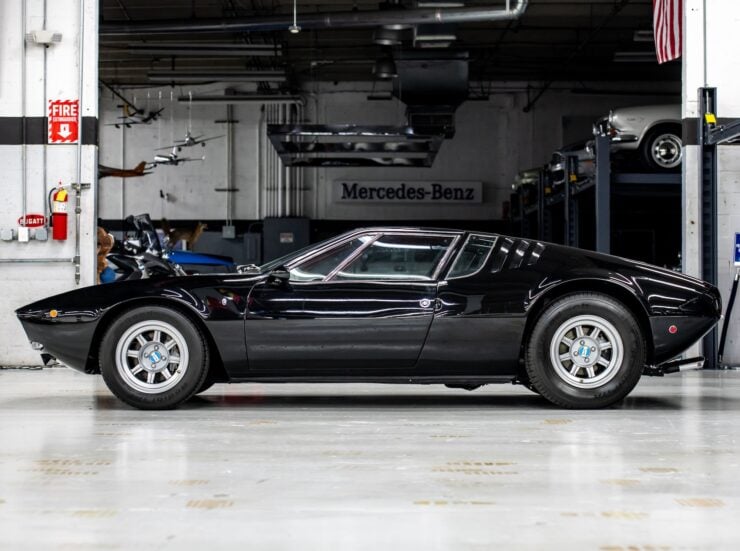

The P70 frame was a tubular steel backbone chassis, similar in design to what had been used on the earlier De Tomaso Vallelunga, but made a lot stronger. It would be fitted with independent front and rear suspension, four wheel Girling disc brakes, rack and pinion steering, and it would be powered by a mid-mounted 306 bhp Ford 289 cubic inch V8 sending power back through a 5-speed ZF transaxle to the rear wheels.
Later Mangustas would be given the Ford “J Code” 230 bhp 302 cubic inch V8, though many owners would have their cars modified to bring the power levels up to around (or over) the 300 bhp mark.
The Design Of The Mangusta
The body of the Mangusta has been winning it new fans for decades, but interestingly it had actually been designed for another car first – a proposed mid-engined Iso that never came to fruition. When Alejandro de Tomaso approached Giorgetto Giugiaro at Ghia to design the body for the Mangusta chassis he was shown the mid-engined Iso design and fell in love with it.
This body design was then modified to fit the dimensions of the Mangusta, and production commenced. Giugiaro would design many of the most memorable cars of the latter half of the 20th century, including the DMC DeLorean, Iso Rivolta, Lancia Delta, Lotus Esprit, VW Golf and Scirocco, Maserati Merak, Ferrari 250 GT “Competition” Berlinetta SWB Speciale Bertone, and countless others.
Perhaps the single most famous feature of the Mangusta is the gullwing-style doors over the engine bay, offering unfettered access to the engine compartment and to the spare wheel stored aft of the engine, over the top of the transaxle.
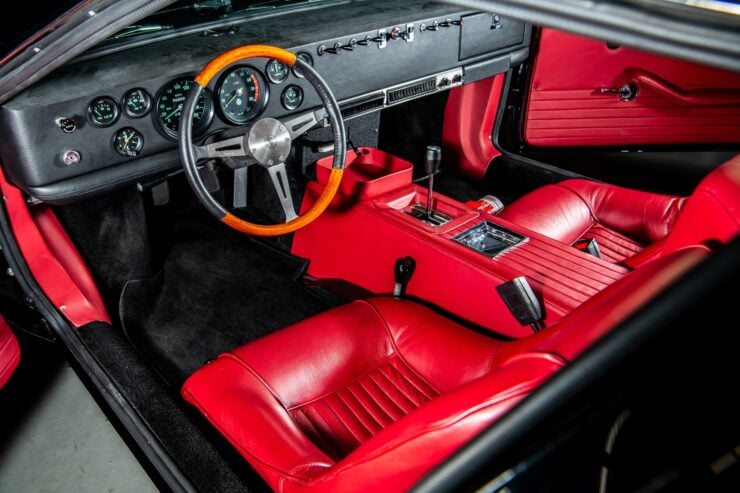


All examples of the Mangusta would be fitted with a Ford V8 with one exception, a car that was built with a Chevrolet Corvette 327 V8 for General Motors Vice President Bill Mitchell. It was later sold to GM designer Dick Ruzzin who has kept the car right through to the current day.
The interior of the Mangusta was beautifully appointed, and easily on-par with the best coming from Lamborghini or Ferrari. The cars came with leather interiors, air conditioning, power windows and power steering, a stereo system, a gated shifter, and twin bucket seats. There is a modest trunk up front for cargo, but it’s not really designed for anything more than a couple of weekend bags.
401 Mangustas were built between 1967 and 1971 before production shifted over to the De Tomaso Pantera, a car that would also be mid-engined and powered by American V8s supplied by Ford.
The 1969 De Tomaso Mangusta Shown Here
The vehicle you see here is a 1969 De Tomaso Mangusta that benefits from a 2015 restoration by De Tomaso marque specialists Roger Brotton and Phillip Stebbings in the UK. No expense was spared during this restoration, and the car now presents as one of the best examples of its kind in the world.
It is still fitted with the correct 302 Ford V8 however the engine has been upgraded with a 340 stroker kit and is said to produce 330 bhp, a significant improvement over the 230 bhp of the original and a more fitting power level for a car of this breeding.
The car is now finished in a fresh coat of Black paint over a Red leather interior, with correct correct De Tomaso alloy wheels on all four corners, and the correct De Tomaso steering wheel.
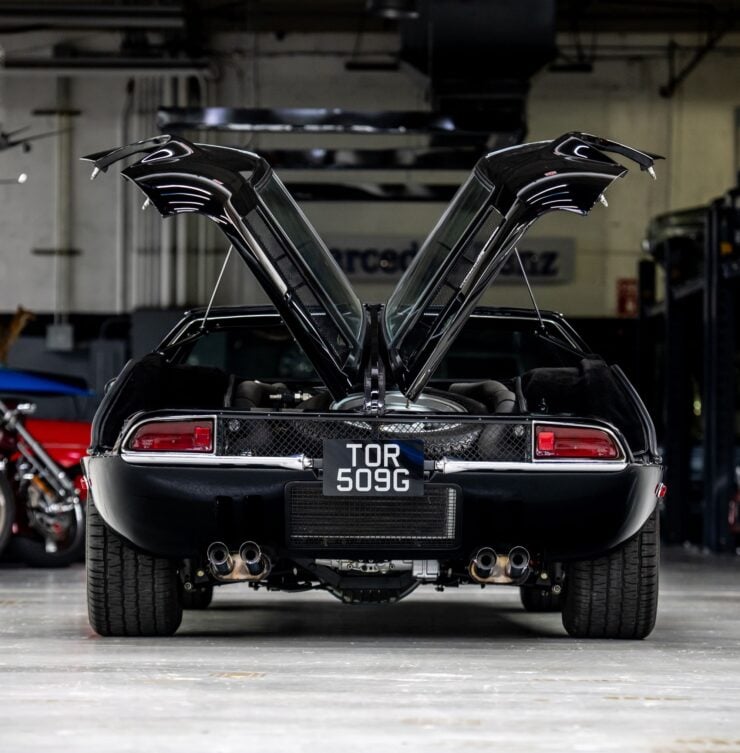


After the restoration was completed the car was shown at the 2018 London Concours, it was then later featured in a Classic & Sports Car magazine article comparing it to the Lamborghini Miura and Ferrari GTB/4 Daytona – two of its key competitors from the period.
It’s now due to roll across the auction block with RM Sotheby’s in late February in Miami with a price guide of $250,000 – $300,000 USD. If you’d like to read more about this car or register to bid you can visit the listing here.
Images: Jorge Guasso ©2025 Courtesy of RM Sotheby’s
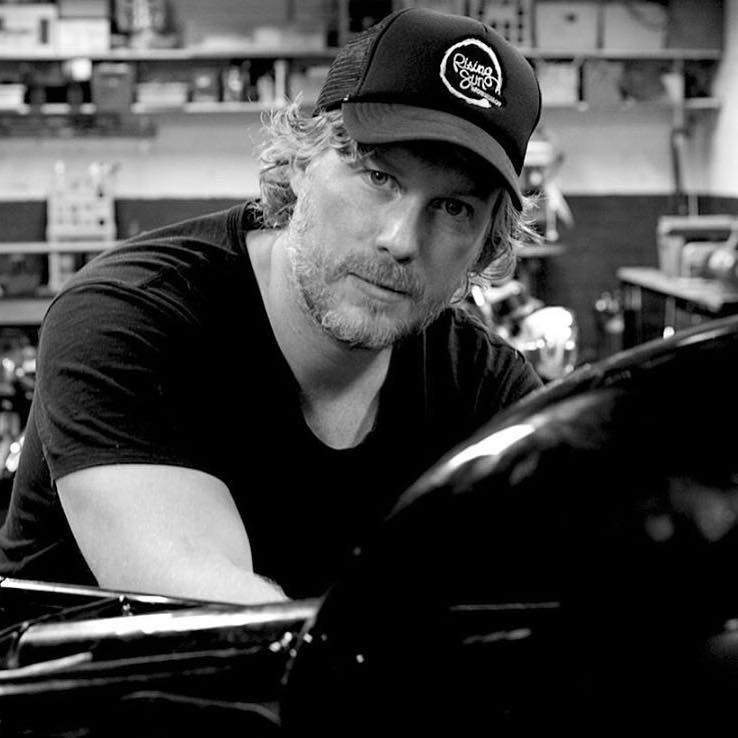

Articles that Ben has written have been covered on CNN, Popular Mechanics, Smithsonian Magazine, Road & Track Magazine, the official Pinterest blog, the official eBay Motors blog, BuzzFeed, Autoweek Magazine, Wired Magazine, Autoblog, Gear Patrol, Jalopnik, The Verge, and many more.
Silodrome was founded by Ben back in 2010, in the years since the site has grown to become a world leader in the alternative and vintage motoring sector, with well over a million monthly readers from around the world and many hundreds of thousands of followers on social media.


